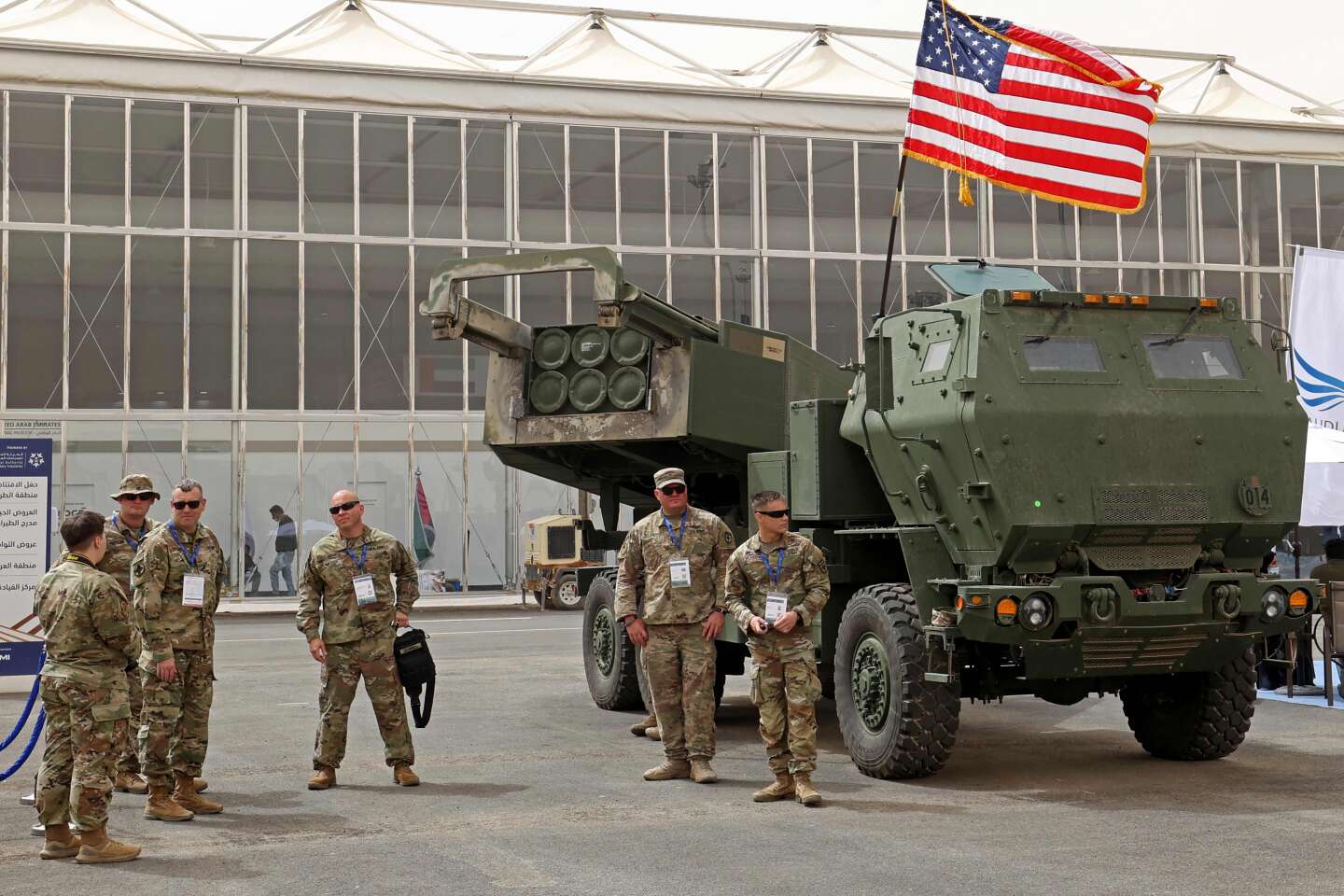
For several days, Ukraine had been insistently calling for MLRS (for Multiple Launch Rocket System, “multiple rocket launcher”) in order to be able to respond to Russian artillery and try to stop the advance of Moscow’s forces. Mykhaïlo Podoliak, adviser to the Ukrainian presidency, wrote it on Twitter, May 27.
The United States heard his call. “I have decided that we will provide the Ukrainians with more advanced rocket systems and ammunition that will allow them to more accurately hit major targets on the battlefield in Ukraine”wrote President Joe Biden, in an op-ed published in the New York Times, Tuesday, May 31st.
Range up to 80 kilometers
Ukraine has a number of RM-70 multiple rocket launcher supplied by the Czech Republic, but these are “Cold War” systems, firing standard Soviet 122 millimeter rockets. The weapons promised by Joe Biden constitute a qualitative leap, even if kyiv does not receive the most advanced system from the American army.
The M142 Himars that the United States will send are a “light” version of the M270. The latter is a multiple rocket launcher mounted on the chassis of an armored tracked vehicle developed in the 1970s by the United States, the United Kingdom, France, Germany and Italy to counterbalance the numerical superiority of the Russian army in Europe. The M142 is a modernized, lighter version, mounted on an armored truck – therefore more mobile – of the MLRS. Developed in the 1990s, it entered service in the 2000s.
Both systems can fire different types of ammunition: from six (for the M142) to twelve (for the M270) GPS-guided 227mm ammunition with a range of up to approximately 80 kilometres. They can also fire a surface-to-surface missile called ATACMS (Army Tactical Missile System) with a range of 300 kilometers.
But in his text, Joe Biden insists that these weapons are only used on the Ukrainian battlefield. This is why Washington will not deliver ATACMS missiles capable of reaching Russia to kyiv. Indeed, since the start of the invasion, the United States has wanted to avoid carrying out actions that could be perceived as a provocation by Moscow, and therefore that the conflict does not get out of hand. “We are not going to send rocket systems to Ukraine that can strike inside Russia”Joe Biden told reporters on Monday morning.
Above all, the Missile Technology Control Regime (RCTM), a voluntary international arms control pact in which the United States and Ukraine take part, prevents potential transfers of ATACMS missiles, the site recalls. The War Zone.
A “myth” during the Gulf War
The M270 MLRS were first used during Operation Desert Storm, launched in 1991 by an international coalition under United States command and commissioned by the United Nations to end the occupation of Kuwait by the United States. ‘Iraq.
In a 1992 report by the Department of Defense to Congress, the Pentagon claimed that they had “a huge psychological impact on Iraqi soldiers. Enemy soldiers were terrified of its destructive force, which they sometimes called ‘rain of steel’. But the New York Times has greatly tempered this ” myth “claiming that no Iraqi prisoner had mentioned “rain of steel”. “Steel Rain” is the nickname adopted by the artillery unit then deployed in Iraq.
Regardless, the “legend” continues, as evidenced by a column published in 2016 in the Washington Post by Robert Scales. This retired American general praised Russian thermobaric weapons and regretted that previous American administrations had abandoned multiple rocket launchers, “rain of steel”On behalf of ” politically correct “.
In reality, the US military has never stopped using these weapons. During the Iraq war (2003-2011), they were used, reports a military blog. In Afghanistan, instead of M270s, it deploys Himars. Their presence was mentioned for the first time in 2007, during the failed attempt to eliminate a Libyan Al-Qaeda fighter, then in 2010 in the Kandahar region, reports the New York Times. General Nick Carter, the British commander of the NATO coalition forces in southern Afghanistan, quoted by the American daily, explains that“they are extraordinarily precise; to the nearest meter ».
Temporarily removed from the battlefield
However, despite the precision boasted by the British general, in 2010, two rockets launched by Himars missed their target and killed ten civilians. These weapons are temporarily removed from the battlefield. In 2015, the Himars were again deployed in Iraq, this time against the Islamic State organization: their presence was mentioned during a Pentagon briefing.
The US Army regularly “rotates” its artillery units with Himars to Europe, while Poland, which already has a few multiple rocket launchers, has placed an additional order, a annoncé Mariusz Blaszczak, the Polish Defense Minister, on 26 May. Romania has it too.
For Ukrainian gunners, training in the use of these rocket launchers would take about two weeks, military officials told CNN. They will have to beware of the replicas of the Russian gunners who also have multiple rocket launchers, the BM-21 Grad, BM-27 Uragan and 9A52-4 Tornado, in service with the Russian army, and whose use is documented by the independent site Oryx.
Our selection of articles on the war in Ukraine





